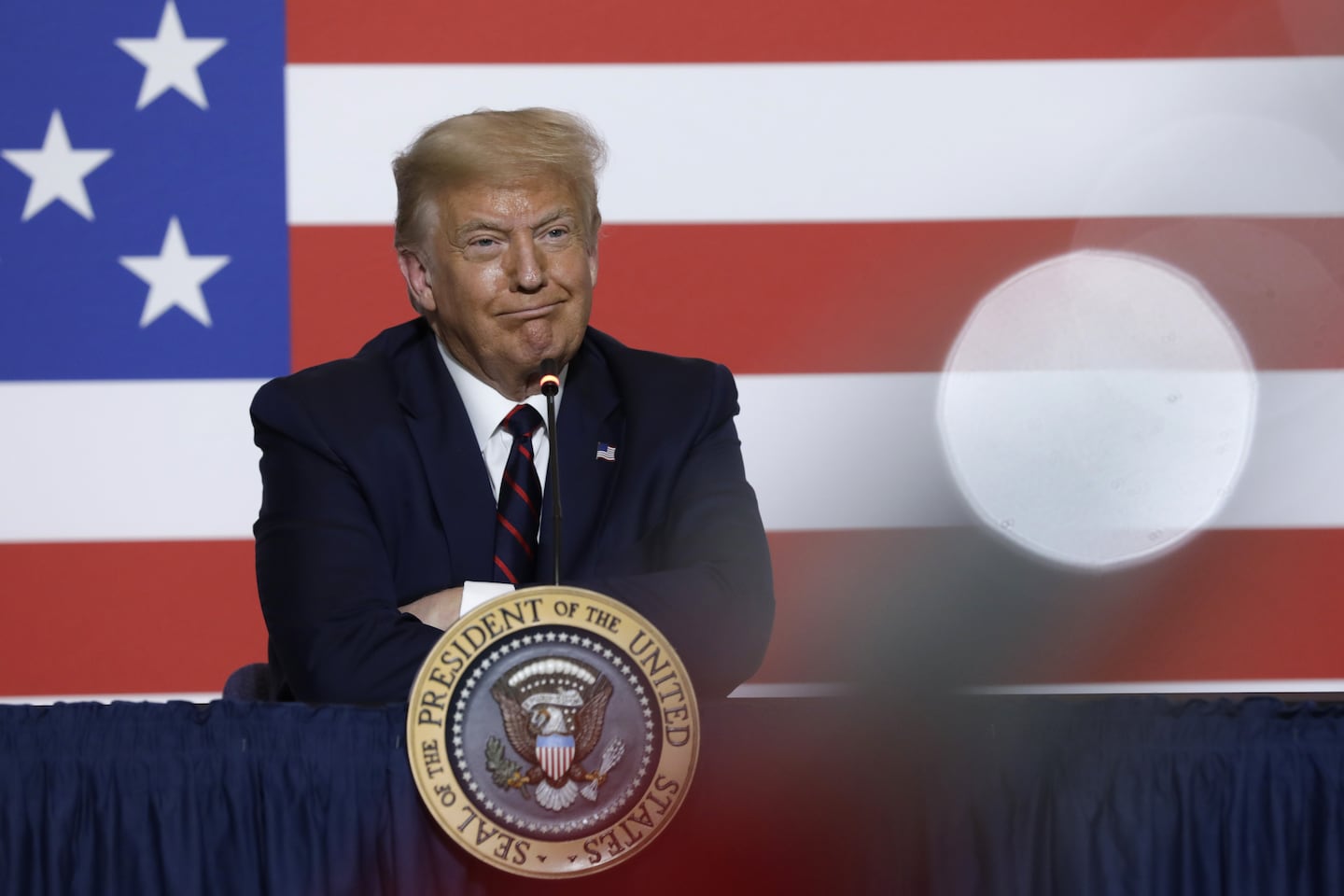All the president’s ‘Suburban Housewives’

“The Suburban Housewives of America must read this article,” he’d tweeted the week before, linking to an opinion column bashing the housing rule. “Biden will destroy your neighborhood and your American Dream. I will preserve it, and make it even better!”
Trump, the only president for whom “unbridled capitalism” could refer to either an economic philosophy or a grammar lesson gone terribly wrong, was telegraphing multiple things with these phrases. One: that Suburban Housewives of America are the demographic that his advisers have told him he needs to wrestle back from Joe Biden in order to win the election (In a recent NPR/PBS NewsHour/Marist poll, 66 percent of suburban women said they disapproved of the job Trump was doing overall). Two: that he assumed this demographic would respond well to barely disguised racial fearmongering. Three: that his understanding of women voters is based on six reruns of “Happy Days” plus a vacuum cleaner ad from 1957.
Who are the Suburban Housewives of America living their Suburban Lifestyle Dreams (SHASLD)?
Trump has provided clues before: “Remember the dishwasher? You’d press it, boom! There’d be like an explosion,” he said at a 2019 Michigan rally. “Now, you press it 12 times. Women tell me . . . you know, they give you four drops of water.” Setting aside the fact that dishwashers are not bombs, Trump would have you believe that the SHASLD (pronounced shazzled), given an audience with the president of the United States, would use that time to complain about their home appliances.
The platonic ideal of a SHASLD is Donna Reed, star of the black-and-white pantheon to domesticity, “The Donna Reed Show.” We know this because when the president wanted to accuse two female journalists of treating him inappropriately (i.e. doing their jobs and asking him questions) he disparaged their “angry” professionalism by quipping, “It wasn’t Donna Reed, I can tell you that.”
Coincidentally, Trump’s tweet about the endangerment of the “Suburban Lifestyle” appeared on the same day as a very different view of the American Dream.
On Wednesday, Michelle Obama debuted her new podcast — a chatty, virtual coffee hour whose first guest was her husband, Barack. For 50 minutes, the former first couple discussed their vision of citizens’ “relationship to our communities and our country” — which really meant, Michelle said, exploring “our place in this world.”
Michelle’s first community was her working-class nuclear family which, Barack teased, was “the Black ‘Leave it to Beavers.’ ” Her father, Fraser Robinson, worked for the city of Chicago. Her mother, Marian, looked after the home, the two children, the neighborhood, and she volunteered with the PTA — a collection of picket-fence tasks that might fit the president’s job description for a “housewife.”
Suburban? That’s where it gets more complicated.
For Black middle-class families, Michelle said, “the dream was to move to the suburbs.” As a child she’d fantasized about a house with two stories — which, in her young imagination, signified financial achievement. “ ’The Brady Bunch’ had stairs,” she said. “ ‘The Partridge Family.’ ” She fantasized about a station wagon, and having her own bedroom.
Ultimately, though, the Robinsons never made it to the suburbs. Her father feared that a mortgage would make them house-poor, unable to save for his children’s education. And more importantly: “My father was suspicious of the suburbs because they still weren’t completely welcoming.”
Their new neighbors might be, to use President Trump’s word, “bothered” by the arrival of the Robinson family.
There is nothing that makes Donna Reed’s pursuit of prosperous domesticity more American than Marian Robinson’s pursuit of the same thing — and yet one was allowed to see it as a right, while one had to see it as an impossibility. The Trump family fortune, for what it’s worth, was partially built on this dichotomy: In the 1970s, Trump Management was sued by the Justice Department for racial discrimination in their apartment leasing — acts that reportedly included Trump’s father instructing a rental agent to take the application of a qualified Black prospective tenant, “put it in a drawer and leave it there.” Queens isn’t the suburbs, but it was aspirational for some.
Trump’s vision of the Suburban Housewife is an aproned fantasy that no longer exists, and maybe never did. At least not the way he imagined it. For one thing, the women he’s talking about are today more likely to call themselves stay-at-home-moms, work-at-home moms, or domestic CEOs.
But the terminology isn’t the issue. The issue is that the “Lifestyle Dream” he’s describing isn’t suburban women’s universal dream, it’s his. It’s a view in which American women should be more “bothered” by “low income” people than they are by inequality and discrimination. It’s a view in which the American Dream belongs to a few, and those few have the duty and right to keep everyone else out. The SHASLDs who live in the suburb of his mind never had to worry about how to get there; they are wealthy and always were. They have forgotten that their families may have struggled or strove once, too, moving from spare bedroom to apartment, apartment to house-with-stairs, with assistance from government or family.
Donald Trump is not really talking about SHASLDs, and he’s not really talking about the suburbs. Neither is Michelle Obama, who later in the podcast described her own parents’ life-lesson this way: “If something good happens to you, if you have an advantage, you don’t hoard it. You share it. You reach out. You give back.”
What they are both talking about is whom America belongs to. And who gets to be a “suburban housewife.” And who has to just be a tired, hard-working mother, looking for a place to live.
Monica Hesse is a columnist writing about gender and its impact on society. For more visit wapo.st/hesse.






